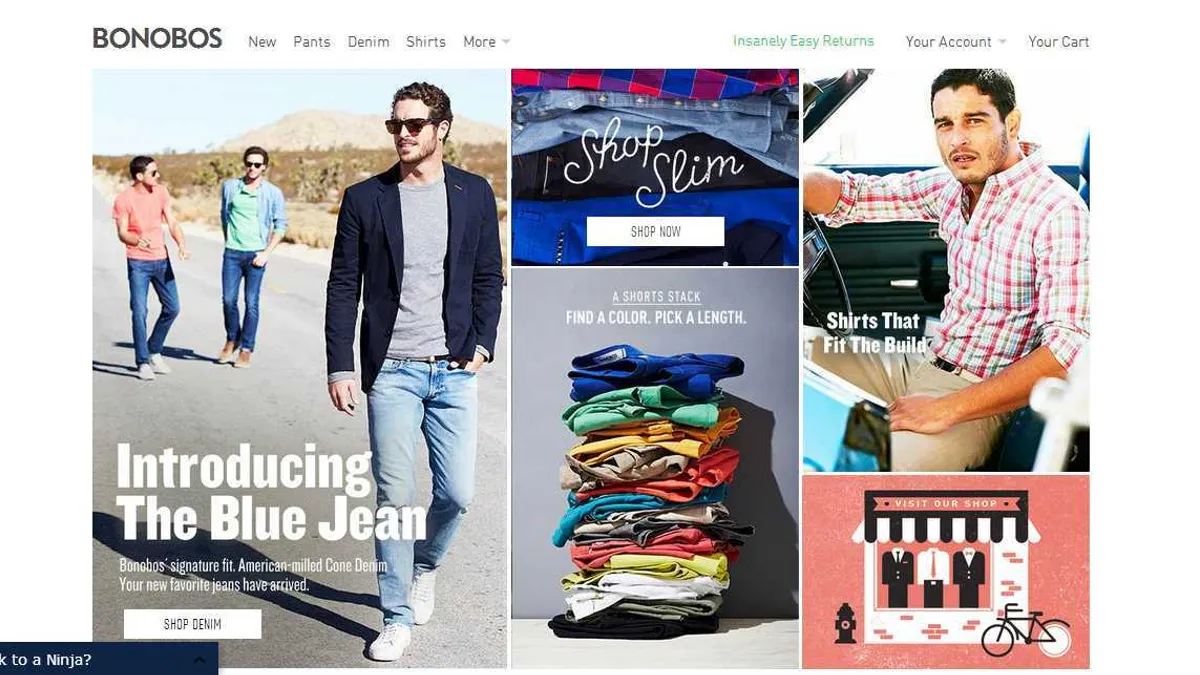Dive Brief:
-
Many physical stores within 10 years will evolve to be simply showrooms that feature merchandise to be touched, felt, and tried on, but ordered online and shipped to shoppers' homes, according to a report due out in February from IBM, originally reported on by Computerworld.
-
The model is one already widely used by menswear e-retailer Bonobos, which has so-called "Guideshops" only stocked with clothes to try on. It is also being tried by women’s apparel e-retailer Modcloth, among others.
-
The model elevates store associates to help with fulfillment and assist customers, rather than stocking shelves or otherwise managing store inventory.
Dive Insight:
Once again, many experts are predicting the end of brick-and-mortar retail, at least as we know it. IBM’s report finds that increasingly stores will continue to be useful in giving shoppers the “touch and feel” many desire, plus the emotional pull of the sensory experience that seeing physical items gives them. But, rather than walking home with the goods they find, they’ll wait for their items to be delivered to them.
"Today, a retailer has 10% to 15% of its business as Internet sales or consumer direct, meaning it goes straight from the warehouse to the consumer," IBM VP and general manager Stephen Laughlin told Computerworld. "In the future, that will be upwards to 50 or more percent. The store will be more of a showroom and a fitting room. That will mean there will have to be significant transformation in terms of retailer supply chains. Supply chains have been tuned for the majority of volume to go from warehouse to store, so there will be a lot of work to adjust to this.”
For savvy store associates at many omni-channel retailers, not to mention at the Guideshops run by the likes of Bonobos, the scenario already exists. If a customer can’t find her size, for example, she won’t have to leave the store without the items she desires, assuming store clerks can readily find the item to order. Many retailers offer free shipping of such items even when they have more stringent free shipping policies for online orders. That already requires a retailer to have transparent inventory information and the technology that store employees require to remove that friction and save the purchase.










